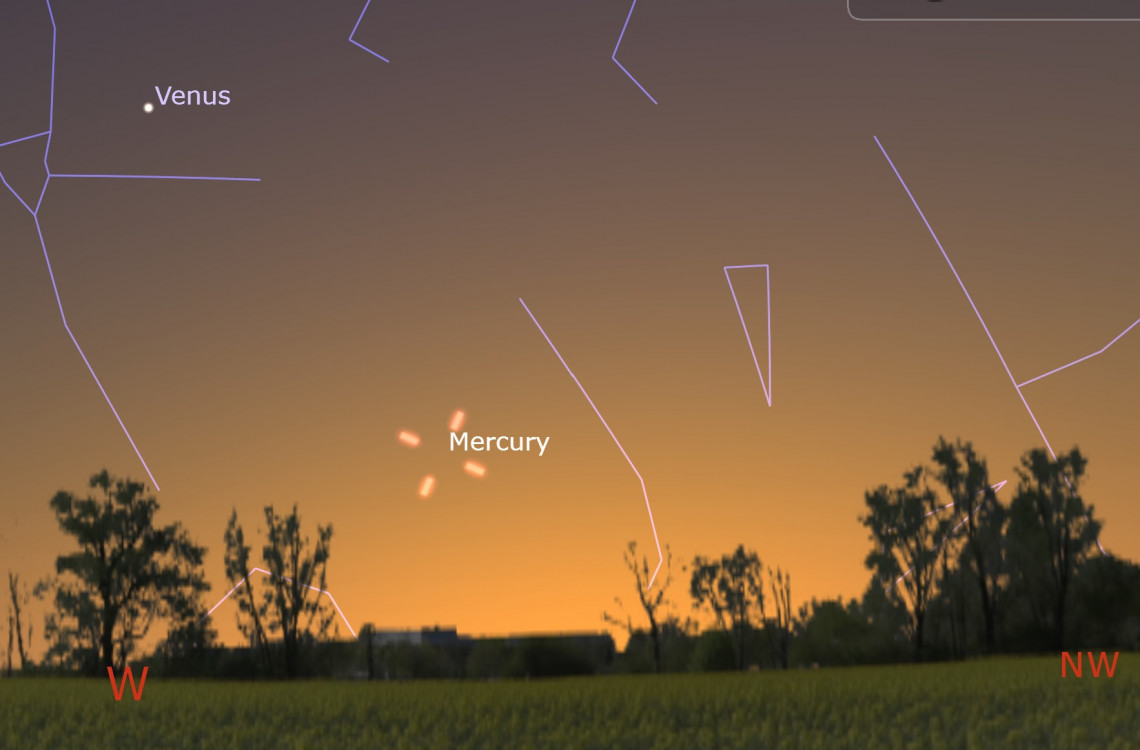Another month has passed, the clocks changed and the nights are getting shorter. We might have less observing time, but at least the temperatures are improving!
Venus will continue to shine brightly in the evening sky this month and can be used to draw a line to the horizon which will pass through Mercury near the horizon. Look for both planets just after sunset in the west. Both Venus and Mercury will rise higher and higher until the 15th when Mercury starts to descend more each evening. On the 21st-23rd, look for the Moon, Mercury forming up vertically in the western sky.
Mars is still high in the night sky in Gemini this month and doesn’t set until around 1 am.
Finally we will get a meteor shower this month that isn’t obscured by a bright moon, this time we have the Lyrid meteor shower from April 14 to 30, peaking on April 22.
For more detailed position and timing information, see Jeff Stetekluh’s Observing Corner for detailed astronomical calculations: Jeff’s Corner
The Sun
Apr 9 rises at 6:41 AM, sets at 7:39 PM
The Moon
Apr 13 Last Quarter
Apr 20 New Moon
Apr 27 First Quarter
Events
Apr 11 Jupiter is in conjunction with the Sun (from Espenak)
Apr 11 Mercury is at greatest eastern elongation (from Espenak)
Apr 20 Hybrid Solar Eclipse (from Espenak)
Apr 23 The Lyrid meteor shower peaks (active Apr 14 to Apr 30) (from IMO)
The Planets
Apr 9
rises transits sets
Mercury 7:21 AM 2:19 PM 9:19 PM
Venus 8:24 AM 3:40 PM 10:57 PM
Mars 10:59 AM 6:31 PM 2:05 AM
Jupiter 6:52 AM 1:18 PM 7:43 PM
Saturn 4:57 AM 10:22 AM 3:47 PM
mag diam notes for Apr 9
---- ----- ----------------
Mercury -0.2 7.3" W, 18*
Venus -4.1 14.7" W, 36*
Mars 1.1 6.1" SW, 70*
Jupiter -2.0 33.1"
Saturn 1.0 15.8"
(* degrees elevation at sunset taking into account atmospheric refraction)
(mag = apparent magnitude, diam = apparent equatorial angular diameter)




